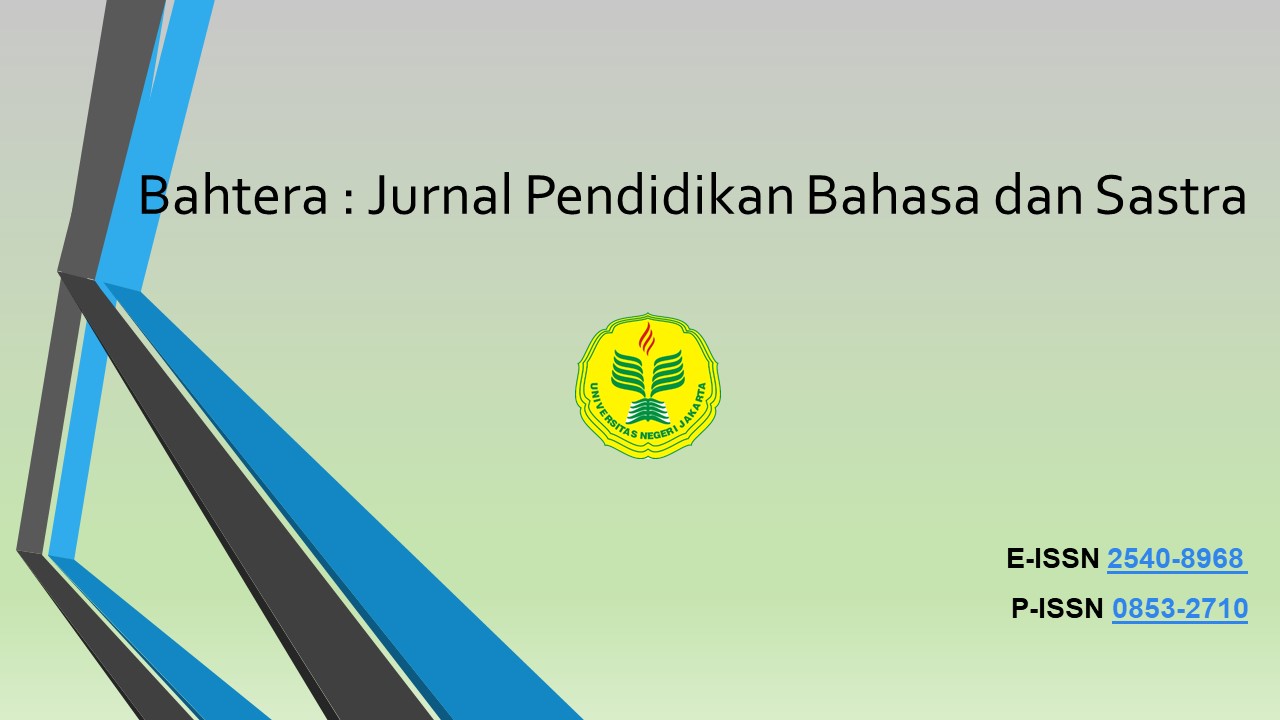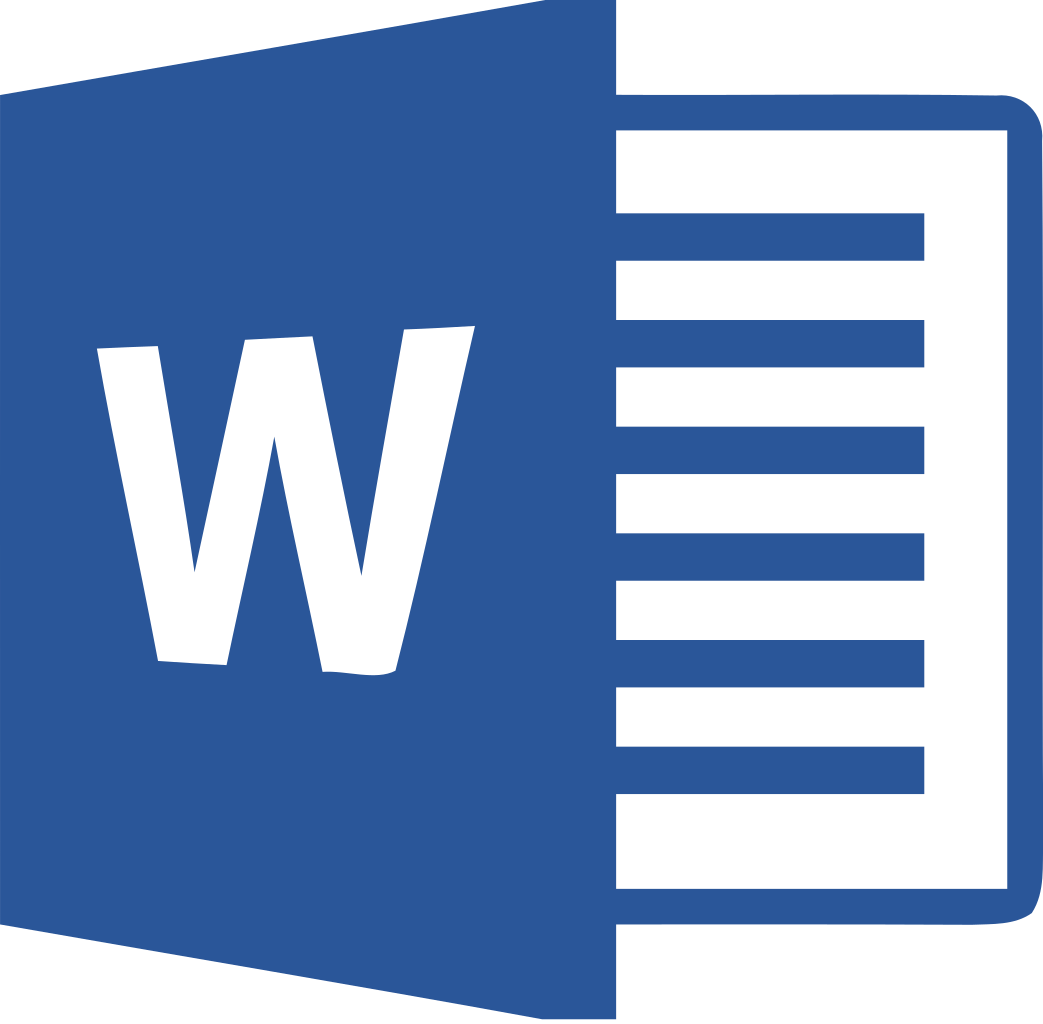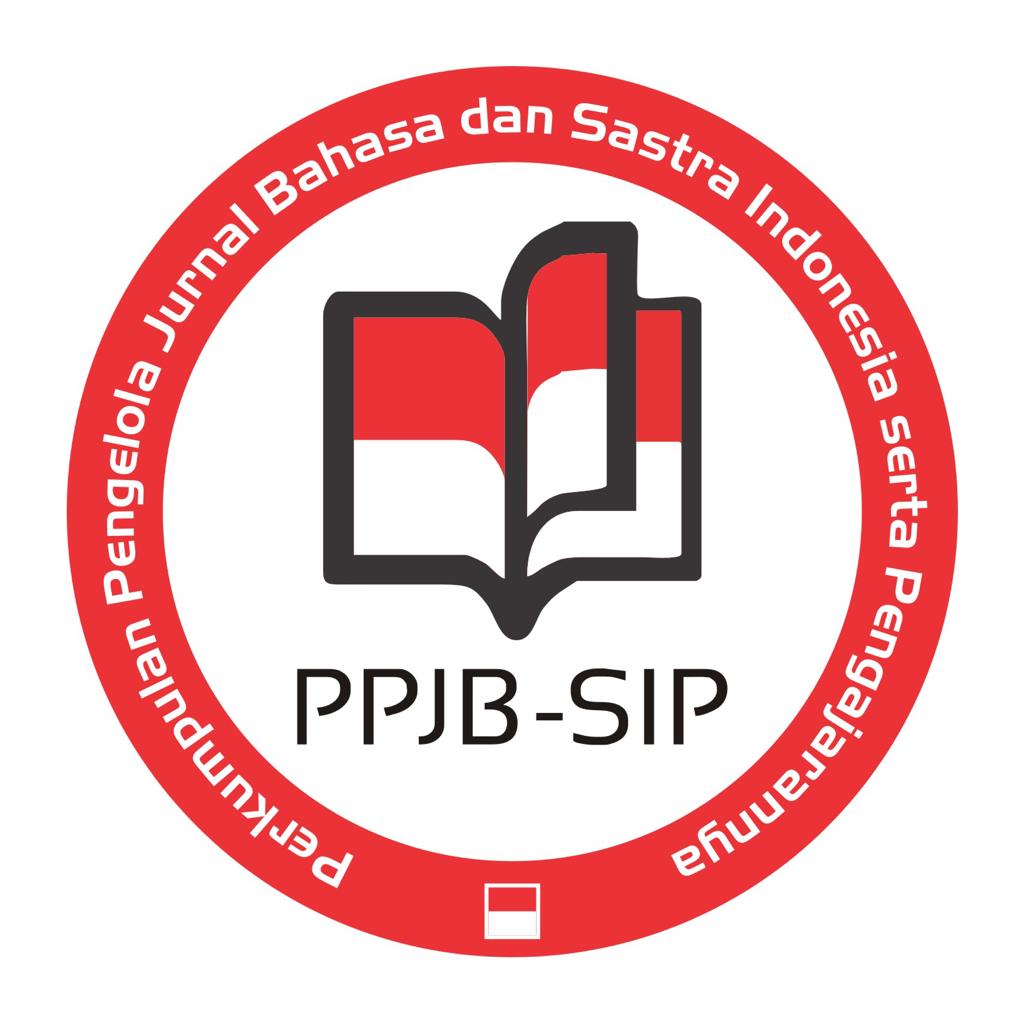ANALISIS TINDAK TUTUR BERBASIS KORPUS PADA TAGAR TOLAK OMNIBUS LAW
DOI:
https://doi.org/10.21009/bahtera.201.01Keywords:
linguistic corpus, social media, speech actsAbstract
ABSTRACT
The purpose of this study is to find out the discursive portrayal of the hashtag “tolakomnibuslaw” on Twitter, which reveals rejection of the Job Creation Law by applying the synergy of linguistic corpus method and illocutionary speech act analysis. The data of this research is a corpus based taken from the utterances of Twitter users who use the hashtag of Omnibus Law Rejection (#tolakomnibuslaw) on October 8, 2020. Word lists and collocations analysis are utilized to see patterns of the hashtag used by people in expressing rejection of the Job Creation Law. Concordance is used to lean more the analysis of speech acts and study the data. The result show that there are 38 styles of the hashtag use. Most of them is the use of noun behind the hashtag “tolakomnibuslaw”. In addition, there are also five common topic hashtags included the hashtag “tolakomnibuslaw”. From the perspective of speech acts, there are five types of speech acts that appear and are dominated by assertive speech and forms of criticism against government effort.
Keywords: linguistic corpus; social media; speech acts
References
Anthony, L. (2015). Laurence Anthony’s AntConc. In AntCont Software.
Atmawati, D. (2016). Penggunaan Bahasa Pada Media Sosial (the Use of Language in Social Media). International Seminar Prasasti III: Current Research In Linguistics.
Austin, J. L. (1962). How to do things with words. Harvard University Press.
Baker, P., Hardie, A., & McEnery, T. (2006). A Glossary of Corpus Linguistics. Edinburgh University Press.
Baker, P., Gabrielatos, C., Khosravinik, M., Krzyzanowski, M., McEnery, T., & Wodak, R. (2008). A useful methodological synergy? Combining critical discourse analysis and corpus linguistics to examine discourses of refugees and asylum seekers in the UK press. Discourse and Society. https://doi.org/10.1177/0957926508088962
Chen, M., & Flowerdew, J. (2018). Introducing data-driven learning to PhD students for research writing purposes: A territory-wide project in Hong Kong. English for Specific Purposes. https://doi.org/10.1016/j.esp.2017.11.004
Clinten, B. (2019). Pengguna Aktif Harian Twitter Indonesia Diklaim Terbanyak. Kompas. https://tekno.kompas.com/read/2019/10/30/16062477/pengguna-aktif-harian-twitter-indonesia-diklaim-terbanyak
Dresner, E., & Herring, S. C. (2010). Functions of the nonverbal in CMC: Emoticons and illocutionary force. Communication Theory. https://doi.org/10.1111/j.1468-2885.2010.01362.x
Gabrielatos, C., & Baker, P. (2008). Fleeing, sneaking, flooding: A corpus analysis of discursive constructions of refugees and Asylum Seekers in the UK Press, 1996-2005. Journal of English Linguistics. https://doi.org/10.1177/0075424207311247
Hidajat, M., Adam, A. R., Danaparamita, M., & Suhendrik, S. (2015). Dampak Media Sosial dalam Cyber Bullying. ComTech: Computer, Mathematics and Engineering Applications. https://doi.org/10.21512/comtech.v6i1.2289
KBBI. (2016). Kamus Besar Bahasa Indonesia ( KBBI ). In Kementerian Pendidikan dan Budaya.
Kususmawardhani, F., Khotimah, H., & Puspitasari, D. A. (2019). KAJIAN BAHAN KEBIJAKAN CYBERBULLYING DI MEDIA SOSIAL PADA PELAJAR INDONESIA.
Leech, G. (2016). Principles of Pragmatics. In Principles of Pragmatics. https://doi.org/10.4324/9781315835976
McEnery, T., & Wilson, A. (2004). Corpus Linguistics: An Introduction (2nd ed.). Edinburgh University Press.
Mujib, I. L. (2020). UU Cipta Kerja Gol, Tagar Tolak Omnibus Law Trending Topic di Twitter. IDN Times. https://www.idntimes.com/news/indonesia/ilyas-listianto-mujib-1/uu-cipta-kerja-gol-tagar-tolak-omnibus-law-trending-topic-di-twitter
Nastri, J., Pena, J. & Hancock, J. T. (2006). The construction of away messages: A speech act analysis. Journal of Computer-Mediated Communication, 11(4), 205–232.
Purbaya, G. f. (2020). Trending Tagar TolakOmnibusLaw di Twitter Tidak Pengaruhi RUU Ciptaker di Sahkan. Jakpus News. https://jakpusnews.pikiran-rakyat.com/nasional/pr-44803252/trending-tagar-tolakomnibuslaw-di-twitter-tidak-pengaruhi-ruu-ciptaker-di-sahkan
Puspitasari, D. A., Kususmawardhani, F., & Khotimah, H. (2019). Analisis Forensik Lingusitik Ujaran Provokasi Pelajar Penyebab Tawuran.
Rahayu, F. S. (2013). CYBERBULLYING SEBAGAI DAMPAK NEGATIF PENGGUNAAN TEKNOLOGI INFORMASI. Jurnal Sistem Informasi. https://doi.org/10.21609/jsi.v8i1.321
Rifauddin, M. (2016). Fenomena Cyberbullying pada Remaja (Studi Analisis Media Sosial Facebook). Khizanah Al-Hikmah : Jurnal Ilmu Perpustakaan, Informasi, Dan Kearsipan.
Searle, J. (2014). What is a speech act? In Philosophy in America.
Searle, J. R. (1969). Speech acts: An essay in the philosophy of language. Cambridge University Press.
Searle, John R., & Vanderveken, D. (1985). Speech Acts and Illocutionary Logic. In Logic, Thought and Action. https://doi.org/10.1007/1-4020-3167-x_5
Sotillo, S. M. (2012). Illocutionary acts and functional orientation of SMS texting in SMS social networks. Aspects of Corpus Linguistics: Compilation, Annotation, Analysis, 12(1), 1–14.
Downloads
Published
How to Cite
Issue
Section
License
License & Copyright
This work is licensed under a Creative Commons Attribution 4.0 International License.










